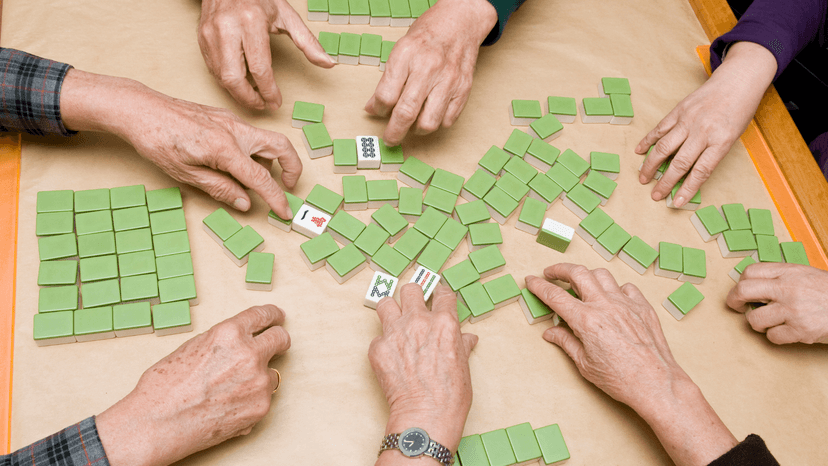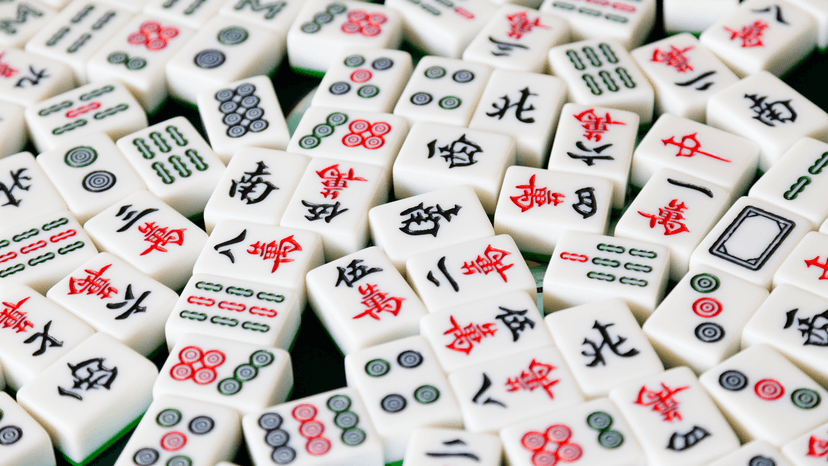Mahjong Melds Essentials

Mahjong is a straightforward game played with 144 tiles. Each player starts with 13 tiles, while the dealer receives 14. The goal is to form specific combinations, known as 'melds', to complete a legal hand. Many players, both new and experienced, might still be getting the hang of forming these melds, so this guide is here to shed some light on the process for our New Zealand players.
Understanding Mahjong melds can seem a bit tricky at first, but we'll break it all down. Stick with us until the end for all the essentials. Let's get started!
What Are Mahjong Melds?
Your hand in Mahjong is made up of melds, which are collections of Mahjong tiles that can take the form of a pong, a kong, a chow, or eyes. You can create these melds by drawing a tile from the wall or by claiming another player's discard. Depending on how a meld is formed, specific Mahjong rules dictate which player has priority for a discard and whether the meld needs to be revealed.
What Is a Pong?
- A pong is a set of three identical tiles.
- A pong can be formed using any suited or honor tiles.
- Bonus tiles won't be used for a pong as they are set aside, and you won't find three identical bonus tiles in the standard set.
- The key is that the three tiles must be exactly the same.
- A pong can be kept hidden in your hand or exposed for others to see.
How to Form a Kong
A kong is a full set of four identical tiles. It's similar to a pong but with an extra tile. Here are the three ways you can make a kong:
- Hidden Kong: You can declare a hidden kong if you have three identical tiles and then draw the fourth tile to complete the set of four. To reveal it, you'd typically expose the meld by placing two tiles side-by-side and the other two crossing them, visible to all.
- Exposed Kong: If you have three matching tiles in your hand, you can claim another player's discard to complete an exposed kong. You then show your three tiles face-up and place the claimed discard either nearby or on top of the central tile of your exposed meld.
- Exposed Kong from an Exposed Pong: If you already have an exposed pong and later draw the fourth matching tile from the wall, you can declare a kong. You can either place this fourth tile on top of your pong or display all four tiles in a row. Importantly, you cannot claim a discarded fourth tile to complete a kong from an already exposed pong; it must be drawn from the wall.
Key Points to Remember for Kongs
- When you form a kong, you'll draw an extra tile from the wall and then discard one, maintaining your hand size.
- The fourth tile that completes a kong isn't counted as one of the 13 tiles you must always have in your hand.
- Just like with pongs, kongs cannot be made using bonus tiles.
- Kongs are worth gathering to gain extra points and prevent opponents from the option to get certain tiles.
Chow
- A chow is created by melding three matching tiles in a row.
- The meld needs to be in the same suit and in exact numerical order.
- Players cannot skip numbers or meld from 8 or 9 to 1 or 2.
- Because they have no numerical value, honor tiles and bonus tiles cannot be utilized to create chows.
- Only the player whose turn came just before their own can steal a discard to build a chow. The person who forms a chow with a seized piece gets the lowest priority for that tile.
- Any other player may take control of that tile in place of the other player if they need it to produce a pong or a kong to win.
- The chow is either hidden or visible, like a pong.
Eyes
Eyes, also known as a pair, are two identical tiles essential to a lawful winning hand. A piece cannot be taken to create a pair of eyes unless the player concurrently completes a valid winning hand.
Interruption of Play
The game can be interrupted by four events. They are the following:
Flower or Season
The last tile of the wall is drawn as a replacement tile whenever a player draws a flower or season, ensuring that they have the 14 pieces required before their discard.
Melding Another Player’s Discard
Other players may take a tile that has been discarded by one player to finish a meld. The advantages of stealing tiles include constructing a winning hand more quickly and earning extra points. At the same time, the drawbacks include having to expose a portion of one's hand to other players and being unable to alter a declared meld.
Moreover, the player must specify the type of meld to be proclaimed when declaring it through a discard before exposing the meld by setting the three or four face-up tiles.
Winning A Hand
Play is stopped when a hand is won in order to evaluate the hand's viability. Following confirmation, the player receives the hand's worth in accordance with the rules of the particular game.
Winning a Hand From a Discard
A player declares victory and reveals their winning hand if, at any time throughout the game, they can utilize another player's discard to finish a legal hand. The hand is over at this point, and mahjong scoring starts.
Based on established table rules, there are several methods to handle the scenario if more than one player can utilize a discard to win the hand. The winner may be determined by adding up the points each player would have gained from the discard, selecting the person who is closest to the discarder in turn order, or concurrently awarding wins to many players.
Winning a Hand From the Wall
A player can also succeed by drawing a tile that finishes a valid hand. This can also be referred to as winning from the wall. Winning from the wall in Hong Kong Mahjong doubles the basic points that each loser must pay.
Winning a Hand By False Win
The declaring of a winning hand is technically permissible at any time. The player must have a full and legitimate hand, though. If not, the player is punished.
- The punishment is based on the table rules.
- The player can hand the other players their points back.
- The player who announces the fake win is also subject to a potential punishment of having to play the remainder of the hand with their tiles face up.
- Some strategies impose punishment at the conclusion of the whole contest.
Robbing a Kong
A play known as robbing the kong is an uncommon yet high-scoring element of Hong Kong mahjong. If a player attempts to declare a kong by adding a fourth piece to a melded pong, but another player can use that piece to finish the hand, the winning player has precedence and may remove that piece from the person who was attempting to declare the kong.
Conclusion
Playing Mahjong is not about just learning the rules or tiles. Knowing about the melds, how to make them, and the different types of melds in mahjong is necessary in order to have a successful game.
Mahjong is not as difficult as it seems. It's just there is so much to learn about the game. But when players have a whole understanding, they undoubtedly have fun.
FAQ
What exactly is a meld in Mahjong?
In Mahjong, a meld refers to specific combinations of tiles. There are three main types, each named according to how it's formed during the game.
What constitutes a melded hand in Mahjong?
A melded hand in Mahjong consists of four melded sets (combinations) and a pair. This means each set in the player's hand includes at least one tile claimed from another player's discard pile.
What are Pongs and Chows in Mahjong, and how do they work?
In Mahjong, a Pong is a set of three identical tiles of the same rank and suit. A Chow is a sequence of three consecutive tiles in the same suit.







